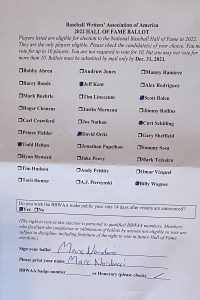Today marks Day 26 of the MLB lockout, as we trudge toward the end of the quietest December this website has ever seen. The new year begins Saturday, and there’s an expectation MLB and the players’ union will resume negotiating core economic issues sometime in January.
The collective bargaining agreement expired on December 1st and MLB instituted a lockout, and the time since has been a waste: no notable movement on a new CBA, and of course a freeze on free agent signings and trades. The only dates that seem likely to motivate either side are related to Spring Training. Normally we’d see pitchers and catchers reporting to Spring Training the week of February 14. And the Spring Training game schedule has been in place for months, with games set to kick off February 26. So February 26 is the next real pressure point, as canceling Spring Training games will result in tangible revenue loss for teams. It’s entirely possible we won’t see any real CBA movement until February.
Seeing as how we’re mired in the first work stoppage of MLBTR’s 16-year history, I’d like to see where our readers stand on several key issues. Check out our eight-question survey below. You can click here for a direct link to it, and click here to view the results.

